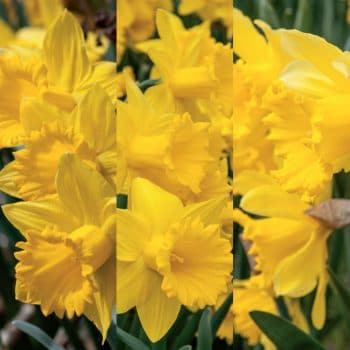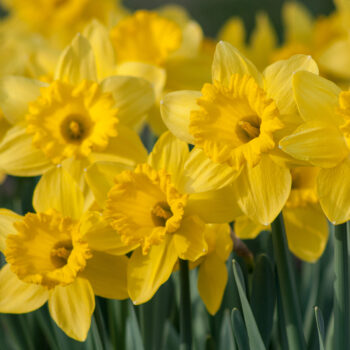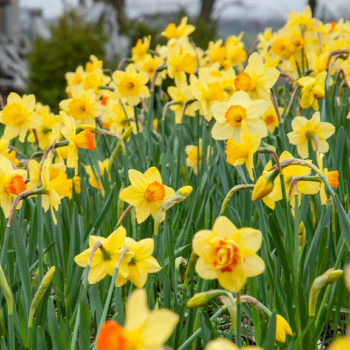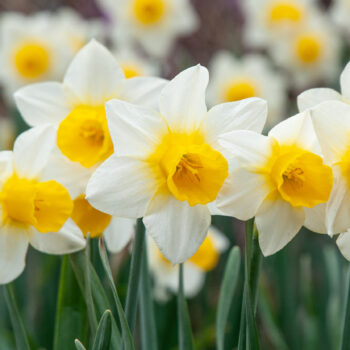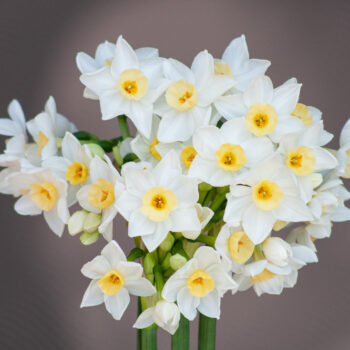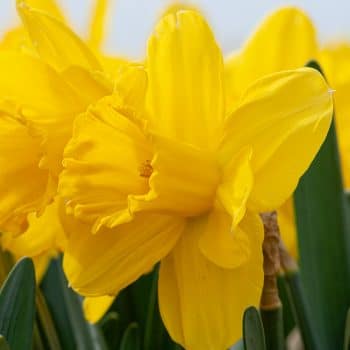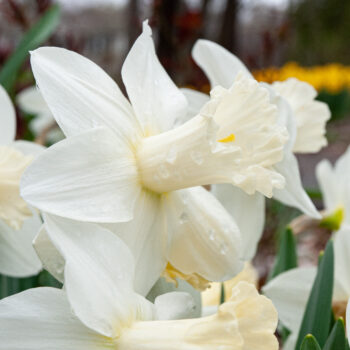Daffodil Bulbs for Naturalizing
Many gardeners like to naturalize daffodils—that is, to plant them so they look as though they have come up on their own. The ideal location is a rough grassy area that you don’t need to mow. This allows the daffodil foliage to yellow completely, in preparation for summer dormancy. If you cut the foliage prematurely, the daffodils may not flower the following spring.
Set the bulbs out in informal groupings called drifts, rather than straight lines. To avoid any hint of human purpose, some people go so far as to toss the bulbs over their shoulders and plant them where they fall.

